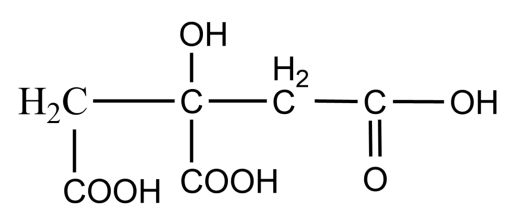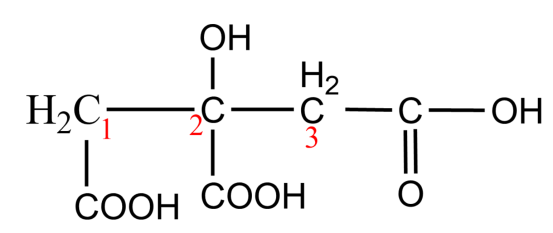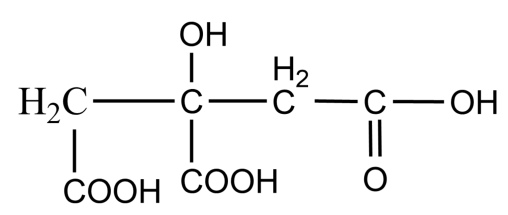
Answer
446.1k+ views
Hint: The systematic approach taken for the naming of organic compounds as per the recommendation of the International Union of Pure and Applied Chemistry (IUPAC) is named as IUPAC nomenclature.
Complete answer:
-For the naming of the compound according to IUPAC nomenclature, we need to follow the following rules-
(i) The longest chain rule- The parent hydrocarbon chain must be identified and subsequently named. The parent hydrocarbon chain is the longest, continuous chain of carbon atoms, which can be either in a straight-chain or in a chain of any other shape.
(ii) The lowest set of locants- The carbon atoms belonging to the parent hydrocarbons are numbered using natural numbers beginning from the first carbon to the last carbon taking care of the priority order of substituents.
(iii) Multiple instances of the same element- Prefixes such as di, tri, tetra, etc depending on the number of substituents present are used where the same carbon atom contains the same substituents.
(iv) Naming of different substituents- In the organic compounds containing multiple substituents, the corresponding substituents are named and arranged in ascending alphabetical order of the names in IUPAC nomenclature.
(v) The naming of different substituents present at the same position- When there are two different substituent groups present at the same position of the organic compounds, the substituents are named in ascending alphabetical order.
(vi) Naming complex substituents- Organic compounds with complex substituents having branched structures must be named as substituted alkyl groups whereas the carbon which is attached to the substituent group is numbered as one. The branched and complex substituents are written in brackets in the IUPAC nomenclature.
-The format of writing the IUPAC nomenclature of an organic compound is Locant + Prefix + Locant + Suffix.

-Following the above-written rules, let us now name the organic compound given to us-

Here, two functional groups are present, carboxylic acid and alcohol. According to the order of priority of the functional group, carboxylic acid has a higher priority than alcohol. So the numbering of the longest chain is done taking care that carboxylic acid gets the least number.
Three carboxylic acid groups are present, hence the prefix ‘tri’ is used. For the alcohol group, hydroxyl prefix is used. Since there are three carbon atoms in the longest chain, hence suffix propane is used.
Hence, the final nomenclature of the given compound is 2-hydroxy propane-1,2,3-tricarboxylic acid.
Therefore, the correct answer is option B.
Note:
The order of functional groups when more than one functional group is present in the molecule
with the prefix and suffix to be used are given below-
Complete answer:
-For the naming of the compound according to IUPAC nomenclature, we need to follow the following rules-
(i) The longest chain rule- The parent hydrocarbon chain must be identified and subsequently named. The parent hydrocarbon chain is the longest, continuous chain of carbon atoms, which can be either in a straight-chain or in a chain of any other shape.
(ii) The lowest set of locants- The carbon atoms belonging to the parent hydrocarbons are numbered using natural numbers beginning from the first carbon to the last carbon taking care of the priority order of substituents.
(iii) Multiple instances of the same element- Prefixes such as di, tri, tetra, etc depending on the number of substituents present are used where the same carbon atom contains the same substituents.
(iv) Naming of different substituents- In the organic compounds containing multiple substituents, the corresponding substituents are named and arranged in ascending alphabetical order of the names in IUPAC nomenclature.
(v) The naming of different substituents present at the same position- When there are two different substituent groups present at the same position of the organic compounds, the substituents are named in ascending alphabetical order.
(vi) Naming complex substituents- Organic compounds with complex substituents having branched structures must be named as substituted alkyl groups whereas the carbon which is attached to the substituent group is numbered as one. The branched and complex substituents are written in brackets in the IUPAC nomenclature.
-The format of writing the IUPAC nomenclature of an organic compound is Locant + Prefix + Locant + Suffix.

-Following the above-written rules, let us now name the organic compound given to us-

Here, two functional groups are present, carboxylic acid and alcohol. According to the order of priority of the functional group, carboxylic acid has a higher priority than alcohol. So the numbering of the longest chain is done taking care that carboxylic acid gets the least number.
Three carboxylic acid groups are present, hence the prefix ‘tri’ is used. For the alcohol group, hydroxyl prefix is used. Since there are three carbon atoms in the longest chain, hence suffix propane is used.
Hence, the final nomenclature of the given compound is 2-hydroxy propane-1,2,3-tricarboxylic acid.
Therefore, the correct answer is option B.
Note:
The order of functional groups when more than one functional group is present in the molecule
with the prefix and suffix to be used are given below-
Recently Updated Pages
Identify the feminine gender noun from the given sentence class 10 english CBSE

Your club organized a blood donation camp in your city class 10 english CBSE

Choose the correct meaning of the idiomphrase from class 10 english CBSE

Identify the neuter gender noun from the given sentence class 10 english CBSE

Choose the word which best expresses the meaning of class 10 english CBSE

Choose the word which is closest to the opposite in class 10 english CBSE

Trending doubts
How do you graph the function fx 4x class 9 maths CBSE

Fill the blanks with the suitable prepositions 1 The class 9 english CBSE

Which are the Top 10 Largest Countries of the World?

A rainbow has circular shape because A The earth is class 11 physics CBSE

Change the following sentences into negative and interrogative class 10 english CBSE

The Equation xxx + 2 is Satisfied when x is Equal to Class 10 Maths

Give 10 examples for herbs , shrubs , climbers , creepers

Difference between Prokaryotic cell and Eukaryotic class 11 biology CBSE

One Metric ton is equal to kg A 10000 B 1000 C 100 class 11 physics CBSE





